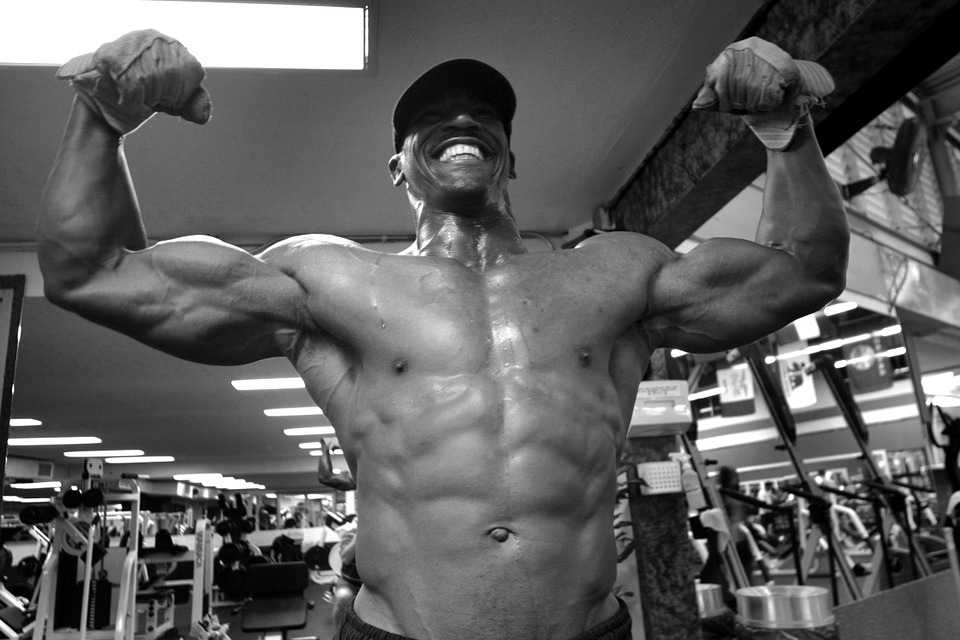A major reason why weightlifting is beneficial to you is that it breaks down your muscles to build them back up stronger. See, the body is always trying to do whatever it takes to stay at equilibrium, so when you are performing resistance training exercises, there is stress that is applied to your muscles; this stress is necessary to achieve your ideal body composition. When your body continuously receives this stress over time, it adapts to that stress by building muscle to be able to withstand the stress.
According to a medical doctor in the early 20th century named Hans Selye, there are three different stages where the body responds to stress.
The first stage is the alarm reaction. This occurs when the body receives the initial stress from the resistance training that was performed. To be able to produce more strength to effectively and efficiently perform the resistance training exercise, the body needs more oxygen. Therefore, you should be doing cardio as well because it helps you utilize oxygen better. If you are able to better utilize oxygen, you’re putting yourself in the best position to lift more weight.
The second stage is called resistance development. The more you workout at a specific weight for a particular exercise, the more your body begins to get more efficient at distributing oxygen to the muscles and the muscle fibers become effective at recruiting the necessary muscle fibers needed to lift the particular weight. When weight lifting starts to feel easy, you need to either increase weight, increase the reps, or increase the sets you are doing. The reason this is a necessity is that you don’t want to plateau. Every time I feel like a particular exercise is easy, I MUST find ways to push myself hard. The subtleties you add to your workouts forces you to push harder. This adds up over time to give you the body that you want.
The third and final stage is exhaustion, which is where the body will shut down simply because it can’t handle the demand of the workout. So push yourself, but keep this in the back of your mind so you don’t go overboard. Is the exercise you’re about to do designed in a way you can push yourself to the absolute limit with no help? Do you need a spotter? Or, should you just leave it alone? This is what you have to be thinking about as you start your resistance training program.
One major point I want to emphasize when performing resistance training, or any type of training, is to pay very close attention to everything. Pay attention to how your body feels every day. Pay attention to the how your body is responding to certain workouts. Pay attention to the workouts that give you the most trouble. Pay attention to the workouts that you can do with ease. Pay attention to the muscles that grow the fastest. Pay attention to the muscles that don’t seem to be growing at all. When you pay attention to every detail, over time, you will know your body like the back of your hand. This will allow you to construct workout regimens for yourself that will ensure you get the most out of it.
Paying attention to your body is also essential for differentiating if you are just in pain for the moment, if you are sore, or if you are injured. This is one thing I really have to pay attention to when training my clients, and I recommend you do the same for yourself. Quick science for you; lifting weights is an anaerobic movement, meaning energy is being produced in the absence of oxygen. When this happens, a byproduct called lactic acid starts to build up in the muscles. The buildup of the lactic acid in your muscles is what causes you to feel the burn as you’re lifting. The more reps you do, especially if they are strenuous, the more lactic acid build up occurs. When there is too much lactic acid present in the muscles, you simply won’t be able to perform the exercise. This type of pain is different from the soreness you feel after a workout.
For beginners that are new to lifting weights, ease into it. There is a type of soreness called Delayed-Onset Muscle Soreness which occurs when an individual begins to exercise after stopping for a while, and your muscles are simply trying to get used to working out again. That type of pain should be different from the pain you feel if there is a sharp stinging sensation in your back.
You have to always be paying attention. There’s a difference when you’re pushing yourself to go extra reps and you feel the pain of the lactic acid building in your muscles than when you’re pushing yourself to do more reps when you have a significant tear in the muscle. PAY ATTENTION!!!
